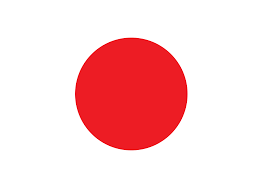Japan flag Colors Code hex, png svg
History of the Japan Flag
- Early Use (7th Century)
- The earliest record of the flag, known as the “Nisshōki” (日章旗), dates back to the 7th century.
- The sun symbol is rooted in Japanese mythology and the Shinto religion, which venerates the sun goddess Amaterasu.
- Medieval Period
- Samurai clans used sun symbols on their banners.
- The rising sun motif became associated with Japanese warriors and military power.
- Edo Period (1603-1868)
- The Tokugawa shogunate began using the sun disk flag on ships as a national symbol during trade.
- Meiji Restoration (1868)
- The modern flag was officially adopted on January 27, 1870, during the Meiji Restoration, as Japan sought to modernize and unify its national identity.
- The flag design, a red circle symbolizing the sun on a white background, was standardized.
- World War II Era
- The flag was a powerful symbol of nationalism and imperial expansion.
- The rising sun flag with rays, known as the “Kyokujitsu-ki,” was used by the Imperial Japanese Army and Navy.
- Post-World War II
- Following Japan’s defeat, the use of the rising sun flag was restricted.
- The simple Hinomaru flag remained as the national flag.
- Official Legal Status (1999)
- The National Flag and Anthem Law was passed on August 13, 1999, making the Hinomaru the official national flag of Japan.
Colors and Their Meanings
- Red Circle (Sun Disk)
- Color: Red
- Meaning: Represents the sun, which is central to Japanese culture and mythology. It symbolizes brightness, sincerity, and passion. The sun is also a symbol of life and energy.
- White Background
- Color: White
- Meaning: Symbolizes purity, honesty, and integrity. White is associated with the sacred and the divine in Japanese culture, reflecting the nation’s commitment to peace and harmony.
The flag’s simplicity and deep-rooted cultural significance make it a powerful symbol of Japan’s identity and heritage.
Guess the Flags Quiz
Sharing is caring 🤗

National Symbols 👇
- 🏁 National Flags
- 🦁 National Animals
- 🐦 National Birds
- 🌻 National Flowers
- 🌴 National Trees
- 🥭 National Fruits
- 🍹 National Drinks
- 👴 National Founders
- ☘️ National Emblems
- 🍲 National Dishes
- 🏛️ National Monuments
- ✍️ National Poets
- 🕌 National Mausoleums
- 🎺 National Instruments
- 🦸 National Heroes
- 📆 National Days

